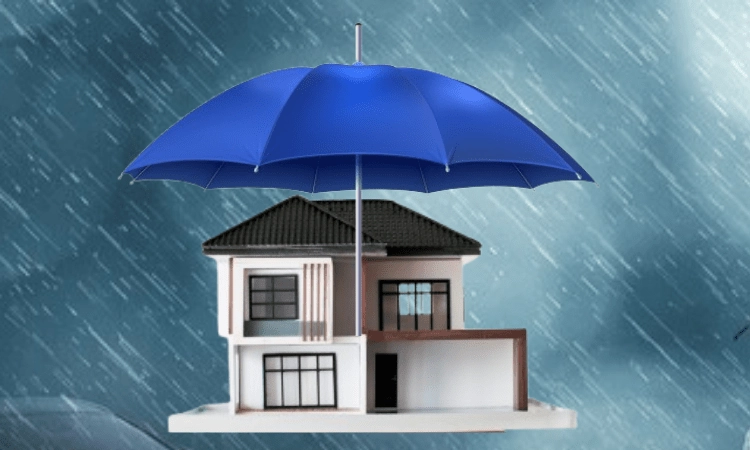Monsoon season tests the strength of India’s infrastructure. Roads flood, construction slows, and risks increase. For investors, especially in real estate investment and urban infrastructure, these months expose vulnerabilities and hidden costs. But not all is gloom, well-planned infrastructure projects withstand the rains and offer steady returns. Understanding the monsoon’s impact helps investors make smarter, more resilient choices.

Table of Contents
Monsoon Challenges in Infrastructure Development
Monsoons disrupt timelines, increase risks, and test project durability. Key challenges include:
- Waterlogging and flooding: Poor drainage systems affect both roads and construction sites.
- Erosion and soil instability: Heavy rains cause slope failures and damage to foundations.
- Worker safety concerns: Reduced labour force and increased health hazards.
- Supply chain delays: Transport bottlenecks due to road or rail damage slow down material movement.
Each challenge affects not only the project pace but also its long-term quality. Investors must factor these into their risk analysis.
Government Standards and Rain-Resilient Engineering
India has adopted new design norms to combat seasonal weather effects. The Indian Road Congress and CPWD recommend:
- Elevated foundation designs
- High-capacity stormwater drainage
- Moisture-resistant construction materials
- Waterproofing membranes for basements and roofs
Smart cities and metro corridors now adopt these rain-resilient strategies as standard. Urban infrastructure projects in cities like Mumbai, Hyderabad, and Bengaluru are designed to withstand heavier rainfall than ever before.
Project Delays and Cost Escalations: A Risk Factor
Monsoon-related delays lead to cost escalation, one of the most pressing investor concerns. A 2-month delay can add 5–10% in costs due to:
- Rework on water-damaged materials
- Rental and equipment holding charges
- Labour extension
- Interest on delayed project loans
For real estate projects, delays hurt sales, stretch builder finances, and reduce ROI. Investors should review construction timelines and ask if buffer periods are built into the schedule.
Role of Real Estate and Infrastructure REITs During Monsoon
Real Estate Investment Trusts (REITs) and Infrastructure Investment Trusts (InvITs) offer diversified exposure to income-generating assets. During monsoon:
- REITs focused on Grade A commercial spaces hold steady due to strong maintenance.
- Infrastructure REITs face higher volatility if assets are in flood-prone or underdeveloped zones.
However, well-managed REITs mitigate these risks through location choice, insurance, and long-term planning. Investors should review annual reports for disaster resilience strategies.
Best Practices Adopted by Developers
Leading developers now plan for rain, not around it. Best practices include:
- Pre-monsoon checks: Clearing drains, reinforcing temporary structures, and storing materials securely.
- Use of quick-dry and water-resistant concrete: Helps maintain pace even during light rains.
- Rainwater harvesting systems: Reduce runoff and aid sustainability ratings.
- Real-time project monitoring: Ensures work can resume immediately when conditions improve.
These practices protect not just timelines but the structural quality of assets. For real estate investment, such safeguards build long-term asset value.
Investor Checklist for Monsoon-Resilient Projects
Before investing during or after monsoon season, run through this checklist:
- Is the project in a flood-prone or low-lying area?
- Does the site have adequate drainage and water management systems?
- Are rain delays factored into project timelines and agreements?
- Has the developer previously handled monsoon construction efficiently?
- Is insurance in place to cover weather-related damage or delays?
- Is this a pre-leased property or a REIT with consistent monsoon performance?
Checking these boxes reduces exposure to cost escalation, quality compromises, and delays.
Conclusion
Monsoon may be seasonal, but its impact on infrastructure projects is long-term. Smart investors stay prepared. Focus on rain-resilient design, strong developer practices, and diversified vehicles like REITs. Choose real estate projects with proactive risk management. In doing so, your real estate investment stays strong, rain or shine.
More Information
Stay updated on the latest developments in the real estate industry by following the openplot information.
Our platform offers valuable insights and updates, along with informative articles and market reports. Openplot.com helps find or sell a home, which is a significant milestone.
Frequently Asked Questions
Q. How does monsoon season affect infrastructure projects in India?
A. Monsoon affects infrastructure projects by causing delays, damaging materials, and disrupting labour and transport. Flooding and waterlogging also impact the structural integrity of roads and buildings if not planned well.
Q. What is cost escalation in real estate projects during monsoon?
A. Cost escalation refers to the unexpected rise in construction costs due to delays, rework, and extended timelines caused by monsoon. These costs often reduce profitability for developers and investors.
Q. Are urban infrastructure projects designed to handle heavy rainfall?
A. Yes. Most modern urban infrastructure projects include advanced drainage systems, elevated foundations, and waterproofing to manage heavy rain. Projects in major cities follow updated standards to reduce flood impact.
Q. How can investors protect their real estate investment during monsoon?
A. Investors should choose real estate projects with strong pre-monsoon safety protocols, review past project delivery records, and verify if risk mitigation is part of the developer’s planning. REITs with diversified and insured assets also offer protection.
Q. Do REITs offer stability during monsoon disruptions?
A. Well-managed real estate investment trusts (REITs) and infrastructure REITs are relatively stable. They rely on income-generating assets with professional maintenance, making them less vulnerable to seasonal delays.